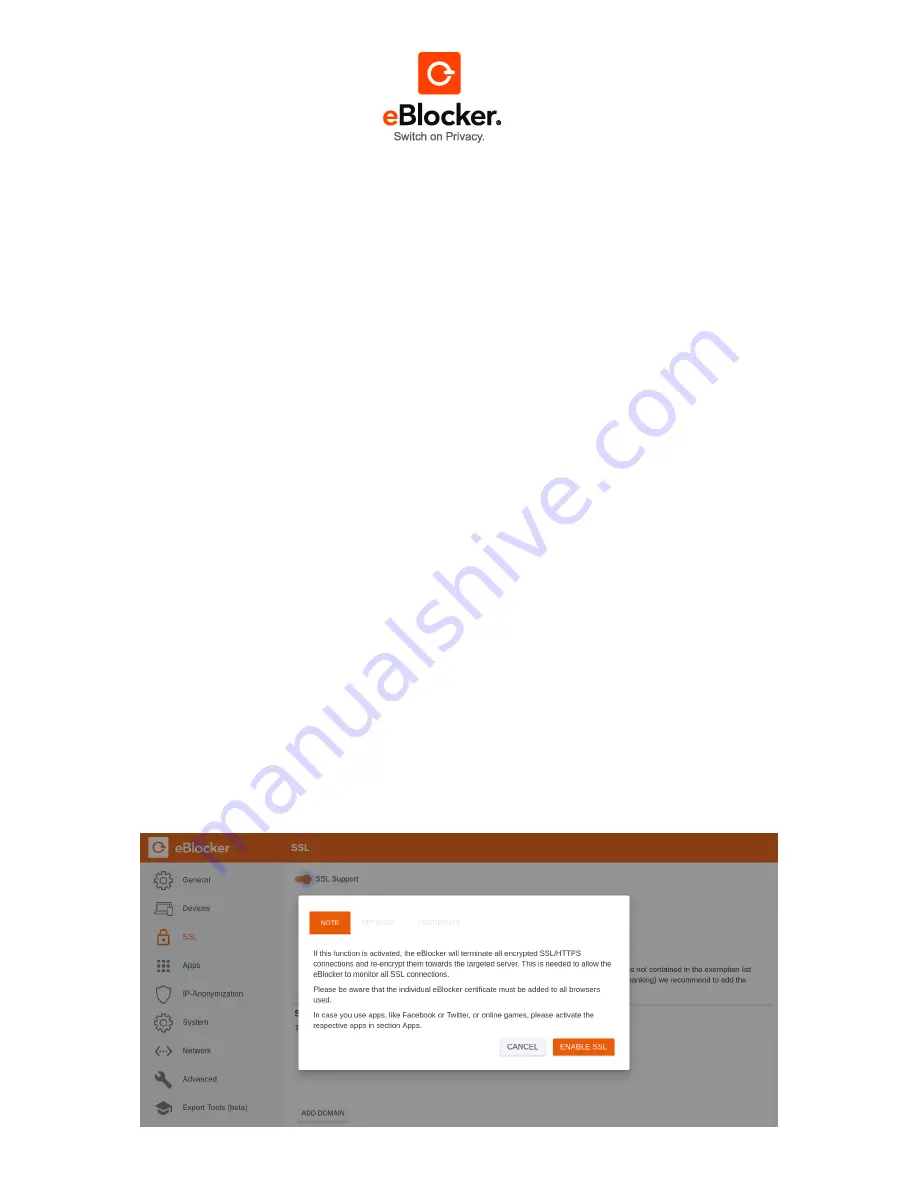
17.10.2017
Page 62 of 81
exist. At the bottom of the page you can either remove all devices that have no IP addresses, remove
all offline devices or remove all devices. Select one of these options if necessary and click the
"Remove Selection" button.
8.4 SSL
SSL stands for
Secure Sockets Layer
and is a protocol to encrypt the communication “end-to-end”
between two communication partners. Sometimes you will also encounter the term TLS (stands for
Transport Layer Security
). TLS is basically the same as SSL. If the standard web protocol HTTP is
encrypted with help of SSL, it is called HTTP
S
. Many websites, especially banking and online shops
are encrypted with SSL nowadays. Thus you can be sure that you are communicating with the
providing website and no third parties can change or read your typed in data. However, not only
reputable shops or banks use SSL. Tracking and ad providers are collecting your data through
HTTPS/SSL increasingly. Your profile data will be send to the tracking server in an encrypted code,
but this will not stop the data collector to create a detailed profile of you further on. Each eBlocker
generates a device unique root certificate and private key when SSL is enabled. This is used to
encrypt the communication to your device when the eBlocker terminates the SSL-connection. We do
not have access to the private key nor to the device itself and have taken high security measures to
protect the eBlocker from hacking - but of course there is no 100% security. We've made SSL
decryption an option. If you feel uncomfortable having eBlocker decrypt the SSL connecting, please
do not enable this option.
As soon as SSL is enabled, eBlocker times encrypted connections, so the data stream can be
analyzed. Like that, your eBlocker is the end of the “end-to-end-encryption”. Because the browser
expects an encrypted connection for HTTPS, eBlocker encrypts the communication to your device.
Therefore it is necessary to adapt the security certificate of your eBlocker in all your browsers and
devices for once. Sometimes this certificate is also called
“certificate for certificate authorities” or as
“root certificate”.
For this, click on the eBlocker icon at the top
right of your browser and go to „Settings”.
Click on the area “SSL”. Activate SSL for your eBlocker by switching the button to the right.
A short note appears that the eBlocker will terminate all encrypted SSL/HTTPS connections and re-
encrypt them towards the targeted server, so the eBlocker can monitor all SSL connections.






































